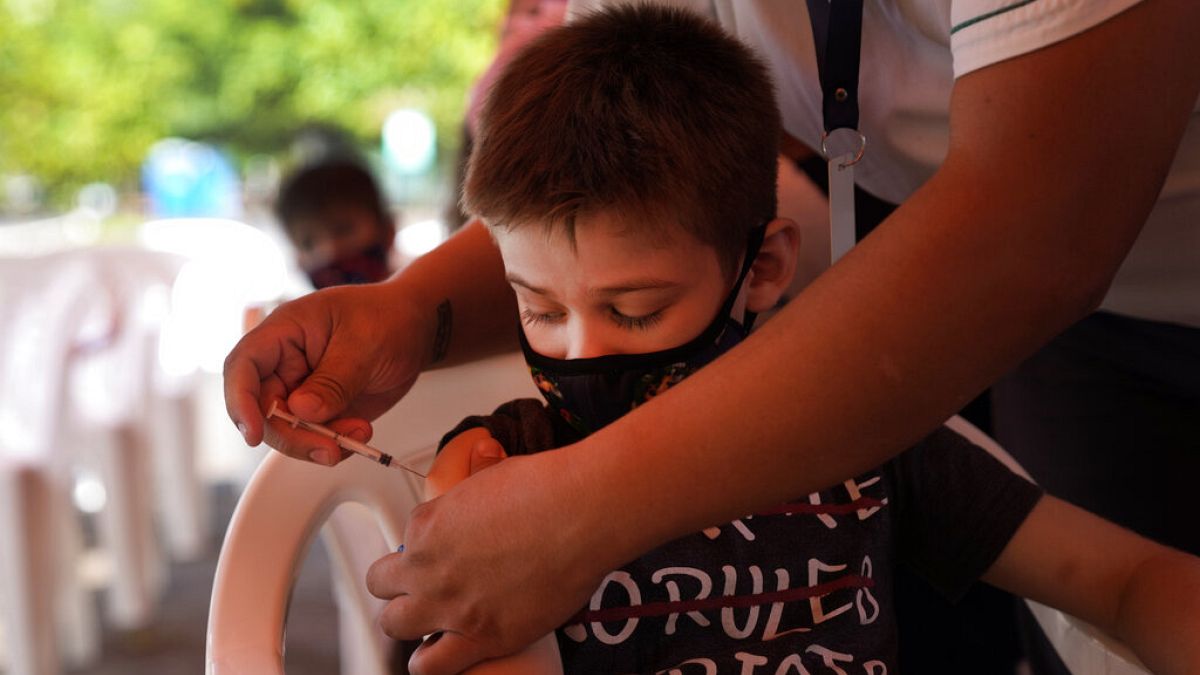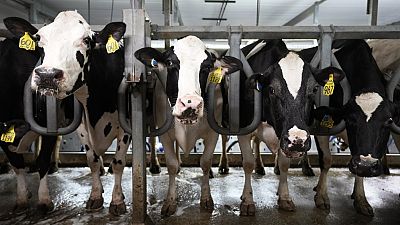The world has yet to catch up from a major drop in childhood immunisations during the COVID pandemic, according to new data.
Fewer children are getting vaccinated today than they were before the COVID-19 pandemic, according to new data that shows the world is not on track to meet global vaccination goals by 2030.
The pandemic disrupted immunisation campaigns around the world, and while vaccination rates rebounded in some countries in 2022, progress stalled in 2023.
Lower-income and conflict-ridden countries in particular are being left behind, according to the new data from the World Health Organization (WHO) and UNICEF, which covers immunisation across 195 countries.
In 2023, 21 million children were unvaccinated or undervaccinated for DTP, which covers diphtheria, tetanus, and pertussis and serves as a benchmark of overall immunisation coverage. That’s up from 18.3 million in 2019, the report found.
"We've never seen backsliding of that magnitude or of that scale, meaning the number of countries, in probably 20 or 30 years," Dr Katherine O'Brien, director of the WHO’s department of immunisation, vaccines, and biologicals, said of the pandemic period during a press briefing.
The WHO is now trying to identify kids who missed shots during the pandemic and get them up-to-speed on routine vaccinations, in what the group calls "the big catch-up".
"It is important that the next pandemic wouldn’t really affect delivery of regular services, not only immunisation, but also other primary health care services," Dr Ephrem T Lemango, associate director for health and global chief of immunisation at UNICEF, told reporters.
14.5 million 'zero dose children'
In Europe, half a million children missed one or more of their DTP innoculations in their first year, according to WHO data.
Globally, there were 14.5 million "zero dose children" who missed all routine vaccinations in 2023.
Ten countries account for 59 per cent of these children: Nigeria, India, Ethiopia, the Democratic Republic of the Congo, Sudan, Indonesia, Yemen, Afghanistan, Angola, and Pakistan.
These countries are characterised by having weak health systems, many babies born each year, or a combination of both factors, the report said.
The lower immunisation rates relative to previous years have led to outbreaks of preventable diseases that divert healthcare workers from regular vaccinations and other health services as they tried to tamp down infections, O'Brien said.
For example, among the 103 countries with measles outbreaks in recent years, the vaccination rate is about 10 percentage points lower than the countries without recent outbreaks, the report found.
"It's kind of a negative cycle that we really need to break out of," O'Brien said, highlighting "the importance of rapidly responding to outbreaks so that they can be shut down as quickly as possible… to prevent serious disease and death".
Impact of conflicts on jab rates
Regional conflicts have also made it harder for healthcare workers to vaccinate children.
In 2023, 55 per cent of unvaccinated children lived in countries experiencing conflict or other vulnerabilities, a disproportionate share given just 28 per cent of babies were born there, the report found.
Sudan has seen a particularly steep drop in DTP immunisation between 2019 and 2023, for example, while levels have also dropped in the occupied Palestinian territories, Yemen, Lebanon, and elsewhere.
Ukraine bucked that trend, with a much higher DTP immunisation level in 2023 than in 2019.
"The reason that’s important is those children who are living in those settings also lack security, they lack nutrition, they lack healthcare, and are most likely, as a result of those things, to die from a vaccine-preventable disease if they get it," O’Brien said.
There were also some bright spots in the report. The Americas and Africa saw improvements in some vaccinations in 2023, particularly in Brazil, South Sudan, Ethiopia, and Cameroon.
Meanwhile, 27 per cent of girls around the world received the first dose of the HPV vaccine, up from 20 per cent from the year before. That’s due in part to countries switching from a two-dose to a single-dose schedule.
The HPV vaccine has been shown to significantly curb the risk of cervical cancer, though it still isn’t widely accessible in large countries like China and India, which have a high burden of the disease, according to the report.
Going forward, health officials are trying to address vaccine misinformation and hesitancy, which increased during the pandemic.
They also want to increase the number of children who get all of their vaccines, as many kids in lower-income countries drop out of immunisation programs after receiving their first or second shots.
In 2023, for example, 13 per cent of children in low-income countries who got their first DTP shot didn’t go on to get the measles vaccine, the report found.
"Countries must strengthen immunisation programs at this time," Lemango said.















